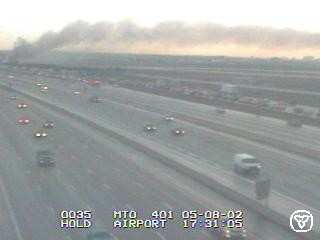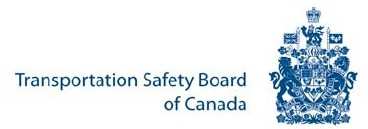Recommends Lengthening Runways, New Severe WX Rules
 A call to lengthen
runways and new rules governing landing procedures during
thunderstorms are just two of the recommendations from Canada's
Transportation Safety Board, following the August 2005 runway
overrun accident involving an Airbus A340 operating for Air
France.
A call to lengthen
runways and new rules governing landing procedures during
thunderstorms are just two of the recommendations from Canada's
Transportation Safety Board, following the August 2005 runway
overrun accident involving an Airbus A340 operating for Air
France.
As ANN reported, Air France
Flight 348 skidded off the runway at Toronto's Pearson
International Airport as it landed during a fierce thunderstorm.
Amazingly, all 309 passengers and crew were able to escape the
burning wreckage, though 10 were seriously injured in the August 2,
2005 accident.
In its final report issued Wednesday, the TSB recommended
Transport Canada mandate 300-meter overrun areas be added to each
end of all Canadian runways. TSB chair Wendy Tadros noted that's
already an international standard.
"We think more needs to be done to make sure aircraft will
always touch down safely," Tadros said. If insufficient space is
available for such overrun areas, alternate methods to stop a
runaway aircraft must be devised.
Other recommendations include new rules about landing in
thunderstorms, as well as increased training for pilots and flight
crews. Suggested measures include a requirement compute required
landing distances ahead of touchdown, taking weather conditions
into account -- something many crews don't do, reports CBC
News.
The report also recommends cabin crews instruct passengers to
leave their carry-on baggage behind during an evacuation;
apparently, a few persons tried to take their bags with them while
escaping Flight 348.
As for the cause of the accident, it isn't difficult to see what
went wrong. TSB Lead Investigator Réal Levasseur said the
pilot continued his approach despite heavy rain and wind shear,
that created a strong tailwind as the A340 approached.
"The pilot committed to landing, as he believed that this action
was safer than conducting a missed approach into the storm,"
Levasseur said.
Despite evidence of judgment errors in its report, TSB
investigations director Nick Stoss took steps to assert the agency
does not blame the pilot for the accident.
"After we release our reports, the headlines will sometimes
read: 'TSB blames the pilot.' Nothing can be further from the
truth," he said. "I can tell you this... crew was not the first one
to make the same decisions in much of the same conditions.
"In fact, the accident record shows the potential for landing
accidents in bad weather remains today," Stoss added, noting
another 10 large airliners have departed runways on landing since
the Air France accident.
"At the TSB, we believe that accidents speak to a failure in the
system," Stoss said. "If we don't do something to change the
system, accidents such as this runway overrun will needlessly
happen again."

Transport Minister Lawrence Canon said he takes the TSB
recommendations seriously, and plans to act on them.
"Transport Canada fully supports the intent of the
recommendations made today and departmental officials are currently
reviewing the contents of the report," Canon Wednesday in a press
release. "Our government's priority is to help ensure the safety
and security of the transportation system."
 Aero-News: Quote of the Day (05.13.25)
Aero-News: Quote of the Day (05.13.25) IAG Orders 76 Boeing, Airbus Airliners
IAG Orders 76 Boeing, Airbus Airliners FAA Shuts Down ATC Oversight Review Amid Scrutiny
FAA Shuts Down ATC Oversight Review Amid Scrutiny Montanas ADS-B Privacy Bill Signed Into Law
Montanas ADS-B Privacy Bill Signed Into Law Newark Falls Victim to More Equipment Outages
Newark Falls Victim to More Equipment Outages




